Case Report: 19CA004
A mechanic died when the multi-piece tire and wheel he was removing exploded.
Download a PDF to print this report: A mechanic died when the multi-piece tire and wheel he was removing exploded (PDF)
Summary
A mechanic working at a port died when the multi-piece tire and wheel he was removing from a container handler exploded. The tire and wheel had been reported damaged and the victim and co-worker were assigned to change them. The victim and co-worker were removing the lug nuts that held the dual wheels together on the container handler when the outer wheel exploded, propelling the victim across the shop. The valve core had not been removed from the stem within the tire to release the air pressure. The co-worker was seriously injured and hospitalized. The CA/FACE investigator determined that, in order to prevent future incidents, employers with workers who change multi-piece pneumatic tires and wheels should:
- Ensure that all manufacturer and company safety policies and procedures for changing tires on multi-piece wheels are implemented and enforced.
- Consider providing employees with certified training in commercial tire service (CTS) or hire companies with certified CTS technicians.
- Replace all pneumatic tires on container handlers and other large machinery with solid tires.
Introduction
On May 9, 2019, at approximately 7:15 a.m., a 58-year-old Hispanic male mechanic suffered fatal injuries when the tire and wheel assembly he was removing from a container handler exploded. A container handler is a heavy piece of mobile equipment designed to lift cargo containers. The CA/FACE investigator received notification of this incident on May 17, 2019, from the Cal/OSHA Weekly Fatality Report. On June 14, 2019, the CA/FACE investigator traveled to the fire station that responded to the incident and interviewed the fire captain. On July 26, 2019, The CA/FACE investigator traveled to the incident scene and interviewed the victim’s supervisor and the senior manager of the company. The co-worker who was with the victim was unable to be interviewed for this investigation. The county coroner, fire department, and sheriff’s department report of the incident were also obtained and reviewed.
Employer
The employer of the victim operates a large container terminal within a large municipal port. The company has provided container and general cargo handling services to shipping lines, including stevedoring, intermodal and truck services, storage, and maintenance for more than 40 years. The company had about 50 full-time workers including 13 mechanics, as well as hundreds of workers who were employed on an as-needed basis.
Written Safety Programs and Training
The employer had a written injury and illness prevention program (IIPP) containing program elements and designated responsibilities, hazard evaluation and code of safe practices, facility inspections and accident investigations, and injury and illness prevention training. However, specific safety training was the responsibility of the port maritime carrier and terminal operator association. There was no documented task-specific training on tire changing. Instruction on tire changing was provided through on-the-job training (OJT) from more experienced employees.
Worker Information
The victim was a 58-year-old Hispanic male who was a mechanic and had been employed full-time by the company for 13 years. His job function was to provide preventive and corrective maintenance for all the mobile equipment owned and operated by the company. He and his co-worker had both been trained through OJT, were familiar with the tire changing procedures, and had done this task many times in the past.
Incident Scene
The incident scene was a large open-air maintenance shop located at a major port in California. The shop was used primarily for service, maintenance, and repair of container handlers (Exhibit 1).
Equipment
Container handlers are used to move large metal cargo containers and are equipped with large hydraulic lifting arms located in the front of the machine (Exhibit 2). The multi-piece wheel rim involved in this incident was removed from a container handler used at this major port. The container handler was used to load and unload cargo containers from arriving and departing ships, trains, and trucks.
The container handler was equipped with eight wheels — four in the front (dual wheels) and four in the rear. The container handler’s pneumatic rubber tires were 40-ply rated tires designed to carry 41,000 pounds of load. The size of the tire was 21.00 X 25 (approximately 23 inches wide and 69 inches high) and, when properly inflated, the air pressure could reach 120 pounds per square inch (psi). The dual wheels of the container handler are each fastened to the vehicle’s axle with 28 lug nuts and clips (Exhibit 3).
The wheel rim involved in the incident was a multi-piece wheel. A multi-piece wheel is a vehicle wheel consisting of two or more parts, one of which is a side or locking ring that holds the tire and other components on the rim wheel by interlocking the components when the tire is inflated. These multi-piece split-rim wheels consist of five components: a rim, two flanges, a taper or advance band, and a locking ring (Exhibits 4 & 5).
Multi-Piece Wheel Hazard
The principal hazard of multi-piece wheels is from pressurized air that, when suddenly released, can throw or shatter the tire or wheel assembly and strike the employee and co-workers. In a multi-piece rim wheel incident, the wheel components separate and are released with violent force (Exhibit 6). The risk of injury or death is greater with larger multi-piece wheel assemblies like the one in this incident. Often, inspections of wheel assemblies can reveal visible cracks that occur over time from metal fatigue.
Investigation
On the day of the incident, the victim and his co-worker picked up their job assignments from their supervisor. One of the assignments was to remove and replace the damaged outer dual wheel assembly from the container handler that was in the left bay of the mechanic shop. Cracks in the wheel assembly had been discovered during routine inspection which required the wheel assembly to be changed. There was another container handler in the right bay of the mechanic shop being worked on by another mechanic. At approximately 7:15 a.m., the victim and co-worker began removing the outer tire and wheel from the container handler. A hydraulic bottle jack was placed under the axle to raise the tires off the ground. The inner tire was deflated but the outer tire was not. The victim, standing in front of the outer tire and wheel assembly, started removing the tire lug nuts, one by one. As he was removing the last nut, an explosion occurred. The blast propelled the victim 20 feet into the air and into the other container handler in the right bay of the shop. The co-worker was also thrown backwards and landed on the concrete shop floor next to the other container handler. Portions of the wheel assembly were scattered throughout the shop (Exhibits 7 & 8).
The noise of the explosion alerted many others within the surrounding area. A co-worker was at the main gate of the terminal when he heard the explosion. He immediately ran to the shop and found the victim and his co-worker lying on the shop floor. Emergency services were immediately notified and numerous agencies responded. The victim was pronounced dead at the scene, and the co-worker was transported to a local hospital where he was admitted for his injuries.
Cause of Death
According to the county coroner, the cause of death was multiple traumatic injuries.
Recommendations
The CA/FACE investigator determined that, in order to prevent future incidents, employers with workers who change multi-piece pneumatic tires and wheels should:
Recommendation #1: Ensure that all manufacturer and company safety policies and procedures for changing tires on multi-piece wheels are implemented and enforced.
Discussion: In this incident, the victim began working on the tire and wheel assembly without deflating both the inner and outer tires. The employer had written safety policies and procedures that included the deflation of tires, and the victim had performed this task many times in the past. However, task-specific training was not provided by the port maritime carrier and terminal operator association.
It is not known why the tire was not deflated at the time of the incident. The company policy was to have workers deflate the tire prior to removing it from the container handler. In this procedure, the valve core must be removed from the valve stem, and a wire pushed through the stem to remove any obstruction. It is not known if the victim may have assumed that the tire had been deflated, but he did not verify by checking the valve stem. Although there was a policy and procedure in place for tire changing, there was no written method or active communication to ensure that the tire was deflated by workers prior to disassembling. Written check off sheets and/or periodic and regular safety audits with direct observation can be used to ensure that safe work practices are applied, and corrective measures taken when necessary.
Safety training for tire and wheel disassembly should always include an emphasis on tire deflation. Due to the hazards posed by the potential energy stored in large tires, it is important that those being trained can identify and understand the hazards. Training and retraining should be verified through written testing, oral confirmation, or demonstration and documented in the worker’s personnel or training file. In addition, training should be provided in the employees’ preferred language(s) and relevant literacy levels. As the trajectory of a blown tire may deviate from its expected path, all workers should be restricted from the area. Caution should always be emphasized when removing a tire and wheel assembly so that other people in the area are not in the line of trajectory or endangered. The best way to accomplish this, especially when in a controlled shop environment, is to restrict the area from all other workers until the tire and wheel assembly is completely deflated and removed from the equipment. Employers can ensure worker compliance with safe work practices through programs of training, supervision, safe work recognition, and progressive disciplinary measures.
Recommendation #2: Consider providing employees with certified training in commercial tire service (CTS) or hire companies with certified CTS technicians.
Discussion: Tire changing is a task that requires specialized skills and training in order to ensure that the task is performed safely. Tires have increased in size and mass and, consequently, tire pressure and risk of explosion have also increased. In this incident, task-specific training on the multi-piece rim was not provided by the port maritime carrier and terminal operator association. They should have provided comprehensive task-specific training for all workers engaged in tire changing and developed programs and policies in conjunction with labor representatives to implement an ongoing safety program for port workers.
Specialized certifications can ensure safety measures are understood and implemented. For example, the Tire Industry Association is an organization that certifies employees in commercial tire service (CTS) and can augment safety training provided by the employer. Alternatively, the company could have hired an outside contractor with certified CTS technicians. If procedures had been implemented and the tire had been changed by a certified CTS technician, this incident could have been prevented.
Recommendation #3: Replace all pneumatic tires on container handlers and other large machinery with solid tires.
Discussion: In this incident, pneumatic tires were used for the container handler and required periodic changing due to wear. Changing a pneumatic tire on large machinery always presents a potential hazard of explosion with serious injury. Solid rubber tires are often filled with compressed polymers (plastic) rather than air or can be a solid molded product. Solid tires may be more expensive and may be harder to handle. However, when solid tires are changed, they cannot explode and pose a risk to personnel. The wheel rims used with pneumatic tires are subjected to extreme loads and wear with time and use. When a rim cracks or fails it must be changed, subjecting the worker to the same hazards when changing a tire. If a solid tire had been used on this equipment at this work site, it could not have exploded, thereby preventing this fatality.
References
California Code of Regulations, Title 8, Subchapter 7. - General Industry Safety Orders, Group 2 Safe Practices and Personal Protection, Article 7 Miscellaneous Safe Practices §3326. Servicing Single, Split, and Multi-Piece Rims or Wheels (h) Demounting Tires. §3328. Machinery and Equipment.
Servicing Single-Piece and Multi-Piece Rim Wheels (PDF, booklet) | web page - U.S. Department of Labor, Occupational Safety and Health Administration, 1998.
Glossary
Dual Tires – A dual-wheel vehicle has four tires on the rear axle instead of only two for increased load capacity.
Intermodal – the use of two modes of freight, such as truck and rail, to transport goods from shipper to consignee. The intermodal process usually begins with a container being moved by truck to a rail, then back to a truck to complete the process.
Container Handler – a vehicle (similar to a forklift) that is used at ports to load, unload, and transport intermodal cargo containers.
Stevedoring – The loading or unloading of the cargo of a ship.
Exhibits
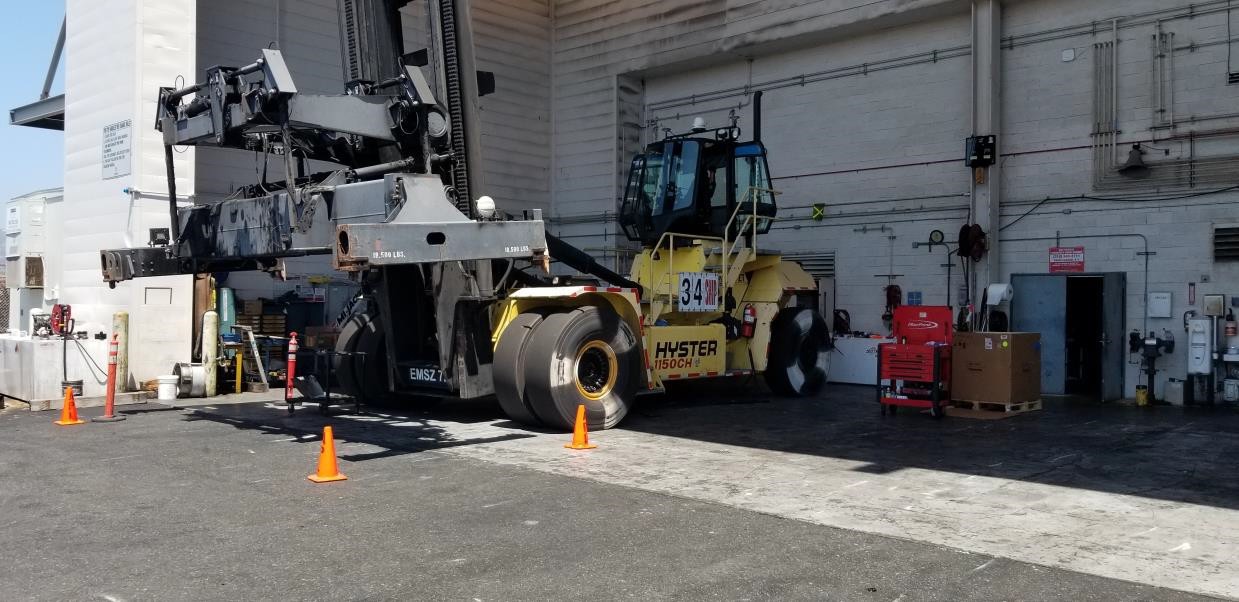
Exhibit 1. Maintenance shop (with a similar container handler) where the incident occurred.
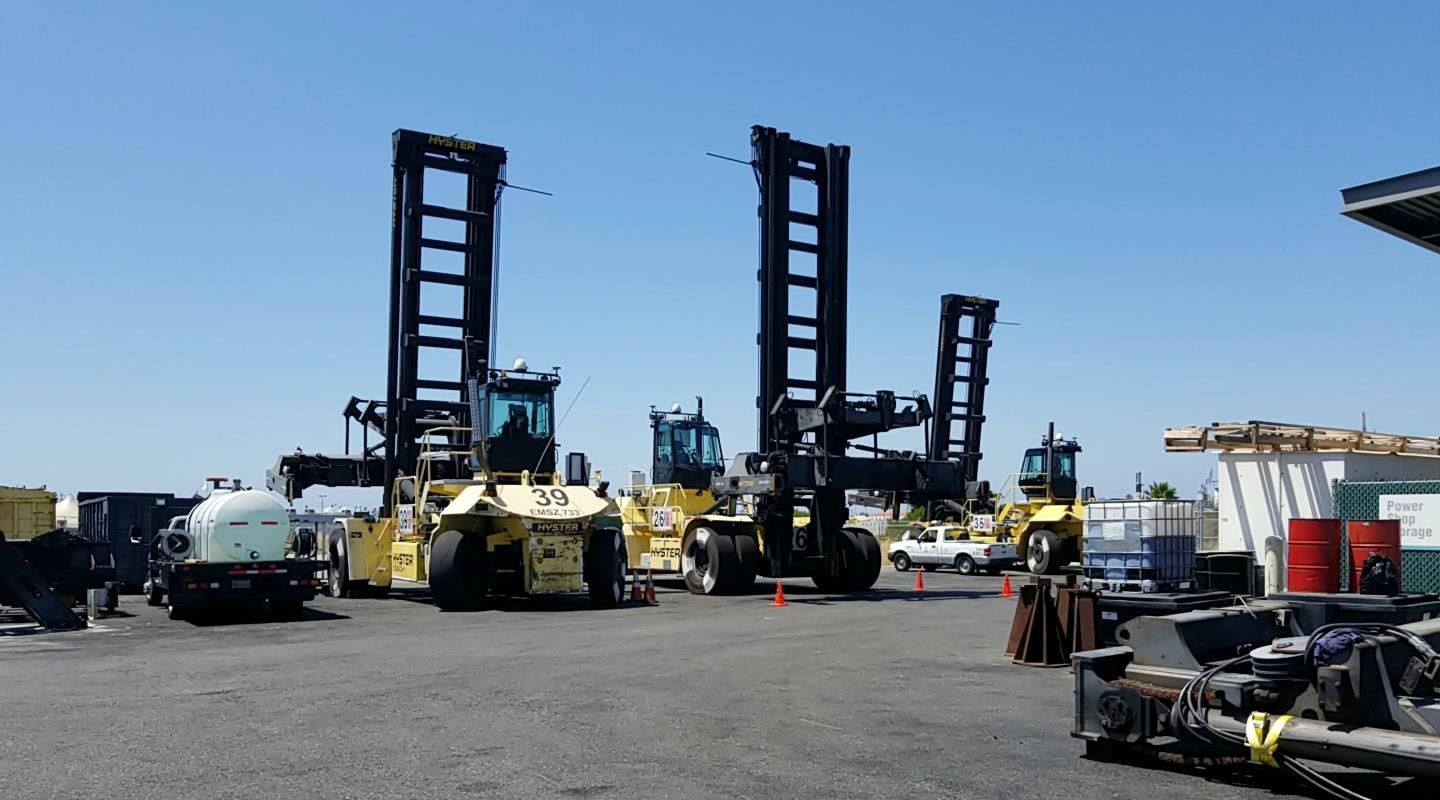
Exhibit 2. A container handler similar to the one involved in the incident.
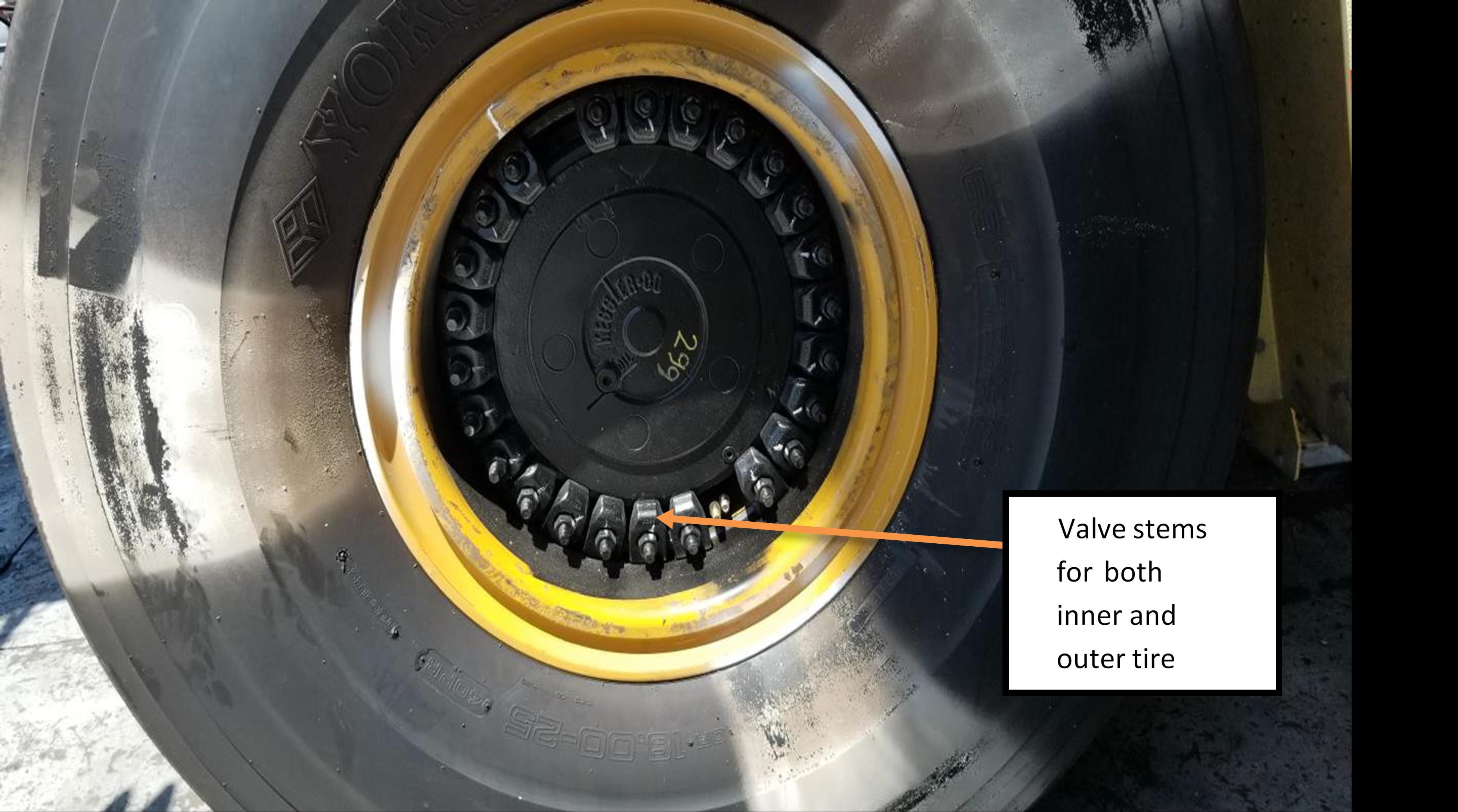
Exhibit 3. A tire and wheel assembly similar to the one involved in the incident,
including valve stems and 24-bolt pattern holding the wheel assembly together.
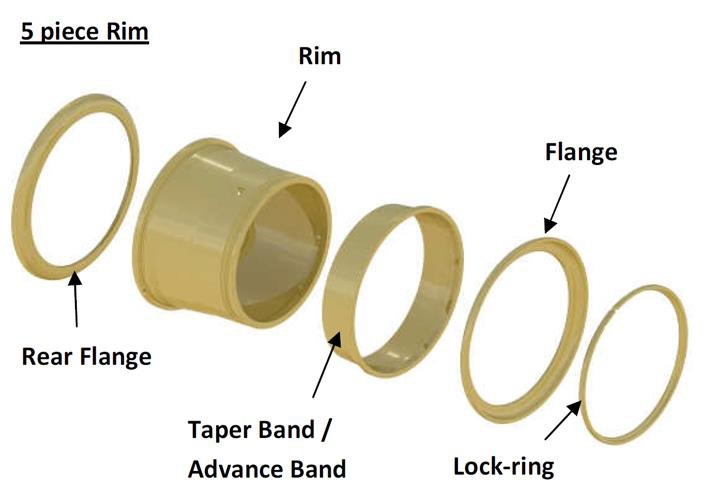
Exhibit 4. Parts of a 5-piece rim.
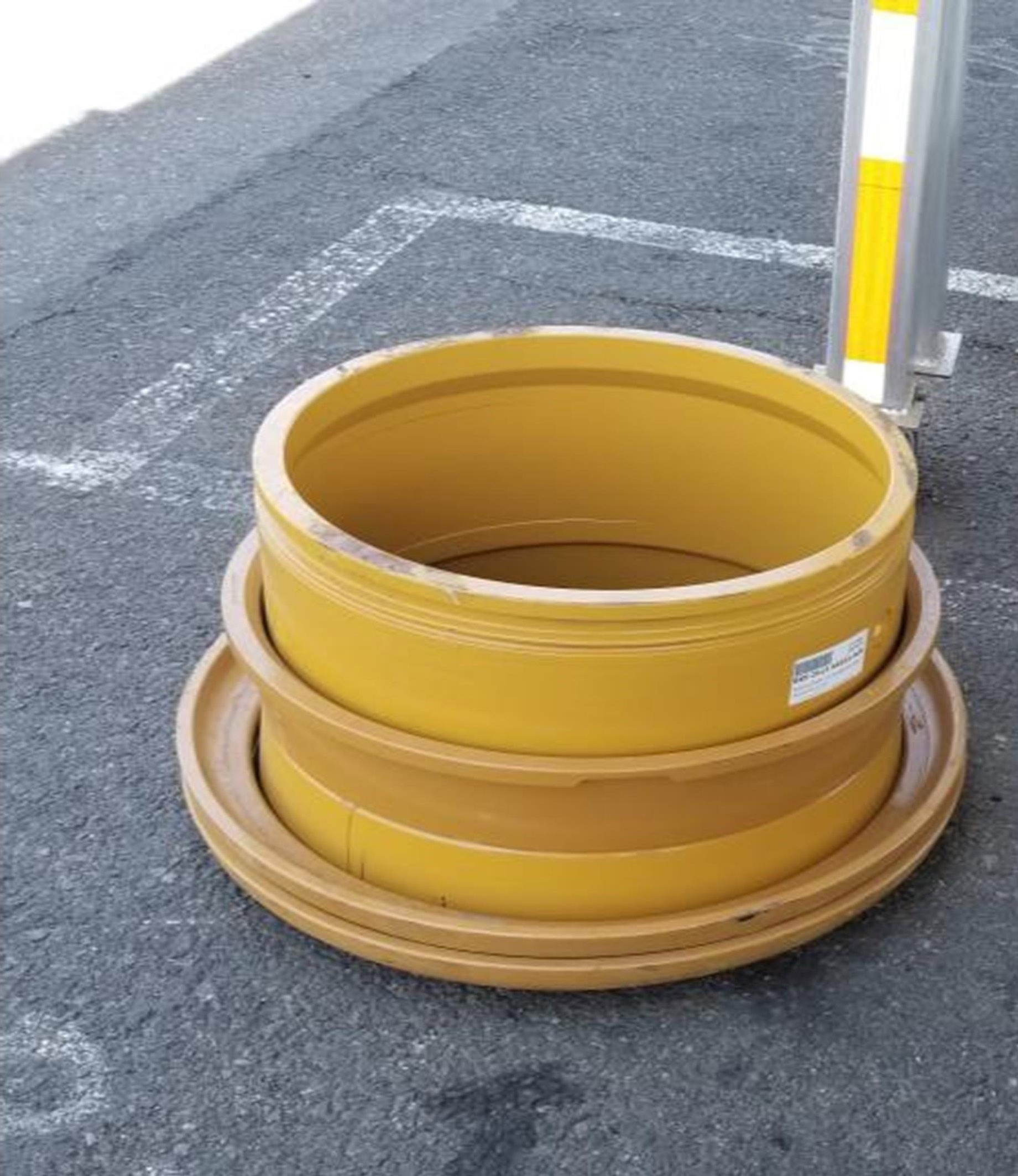
Exhibit 5. A multi-piece wheel similar to the one involved in the incident.
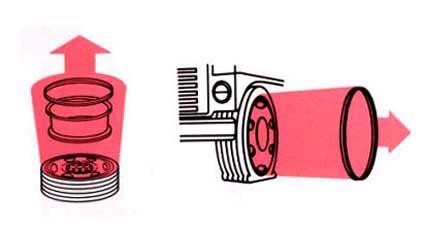
Exhibit 6. Trajectory of multi-piece rim parts placed on the ground and mounted on a vehicle.
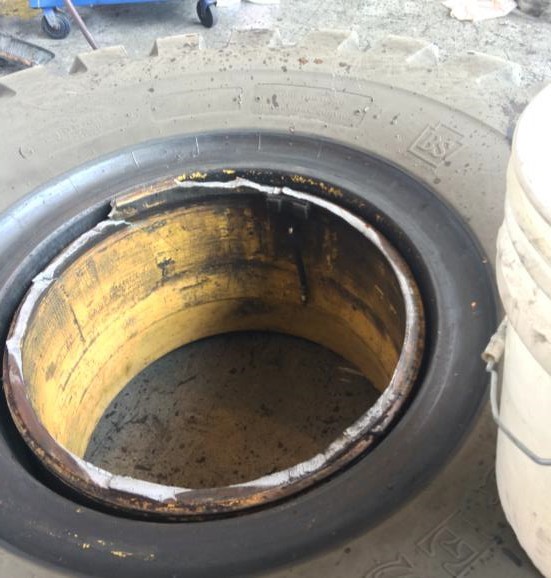
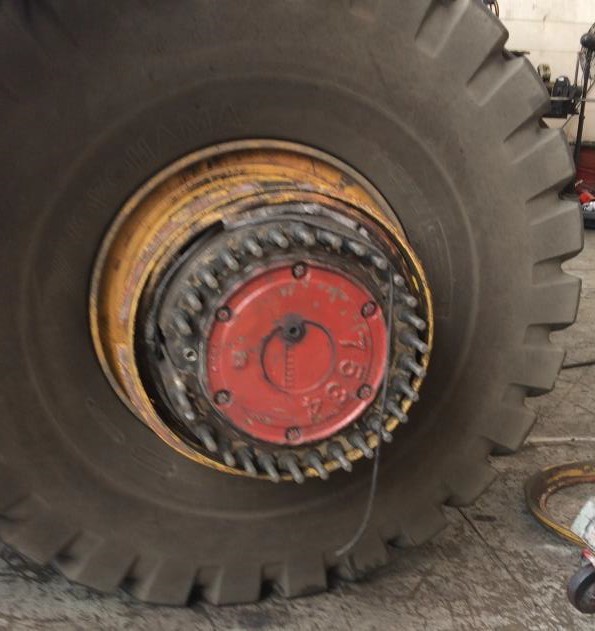
Exhibits 7 & 8. The outer (left) and inner (right) tires on the container handler after the incident.
Authors
Hank Cierpich, FACE Investigator
Robert Harrison, MD, MPH, FACE Project Officer
Laura Styles, MPH, Research Scientist
Glenn Shor, Project Consultant
August 24, 2020